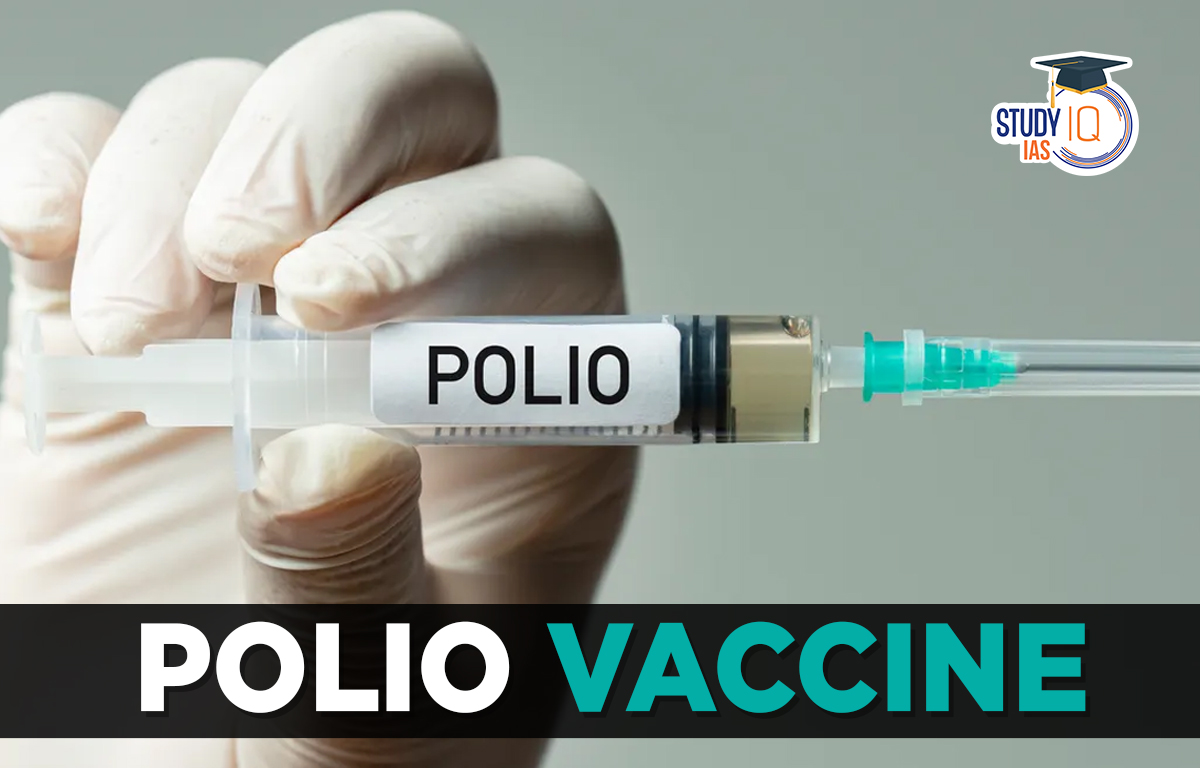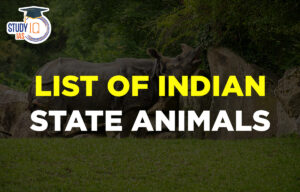Table of Contents
Context: West Bengal government announced that it was introducing an additional dose of injectable polio vaccine as part of the Universal Immunisation Programme (UIP) for children.
About Polio Disease
- Poliomyelitis (polio) is a highly infectious disease that is caused by the polio virus.
- Virus is transmitted by person-to-person spread mainly through the faecal-oral route
- Poliovirus can invade the central nervous system and as it multiplies, destroy the nerve cells that activate muscles, causing irreversible paralysis in hours.
- There are three types of polio virus serotypes: types 1, 2 and 3.
Who is Most at Risk for Polio?
- Poliovirus usually affects children under 5 years of age who are unvaccinated or under-vaccinated.
- The virus can also affect or be carried by adolescents and adults.
- The child or individual suspected of polio may complain of sudden onset of weakness of arms and/or legs.
- According to the India Polio Learning Exchange (along with UNICEF), of those paralysed, 5-10% die when their breathing muscles become immobilised.
Prevention of Polio
- There is no cure for polio.
- The disease can severely paralyze, or even kill, an infected child.
- Polio can be prevented by immunizing a child with appropriate vaccination.
- There are currently two effective polio vaccines:
- Live attenuated oral polio vaccine (OPV).
- Inactivated poliovirus vaccine (IPV)
- Oral polio vaccine is provided at birth, at six weeks, 10 weeks and at 14 weeks (a booster could be factored in at 16-24 months).
- The injectable vaccine is given at six weeks, and then, another dose at 14 weeks.
India and Polio
- In 2012, the WHO removed India from the list of endemic countries of Polio.
- Vaccination in India: In India, two Polio Immunisation days are observed in the country each year and in some States, there are sub-national immunisation days, involving children under five years of age.
- Case of West Bengal: Vaccine-derived poliovirus (VDPV) was detected in the environmental surveillance of sewage samples from Kolkata.
- An additional dose of inactivated poliovirus (IPV) at nine months will protect against any polio thereafter — Vaccine Associated Paralytic Polio or Vaccine Derived Polioviruses.

Global Polio Cases and Efforts
- Wild poliovirus type 2 was globally eradicated in 1999, but vaccine virus type 2 continued for 16 more years.
- No case of wild poliovirus type 3 has been found since the last reported case in Nigeria in November 2012.
- As of October 2022, only two countries worldwide remain with indigenous transmission of wild poliovirus type 1 (WPV1) — Afghanistan and Pakistan.
- Though India has been certified “polio-free”, the risk of wild poliovirus importation or the emergence of vaccine-derived polioviruses persists.
Universal Immunization Programme (UIP)
- It is implemented to provide vaccination to children against life threatening diseases such as Tuberculosis, Diphtheria, Pertussis, Polio, Tetanus, Hepatitis B, Measles, Rubella, Pneumonia and Meningitis caused by Haemophilus Influenzae B.
- The Rotavirus vaccination has also been rolled out in the country for prevention of Rota-viral diarrhoea.
- Pneumococcal Conjugate Vaccine (PCV) has been introduced in all the States and UTs.
Mission Indradhanush (MI)
- It was launched to fully immunize more than 89 lakh children who are either unvaccinated or partially vaccinated under UIP.
- It provides vaccination against 12 Vaccine-Preventable Diseases (VPD) i.e. diphtheria, Whooping cough, tetanus, polio, tuberculosis, hepatitis B, meningitis and pneumonia, Haemophilus influenzae type B infections, Japanese encephalitis (JE), rotavirus vaccine, pneumococcal conjugate vaccine (PCV) and measles-rubella (MR).
- Under Mission Indradhanush, all vaccines under Universal Immunization Program (UIP) are provided as per National Immunization Schedule.


 Daily Quiz 17 April 2025
Daily Quiz 17 April 2025
 Nilgiri Biosphere Reserve, Map, Climate,...
Nilgiri Biosphere Reserve, Map, Climate,...
 Complete List of Indian State Animals
Complete List of Indian State Animals





















